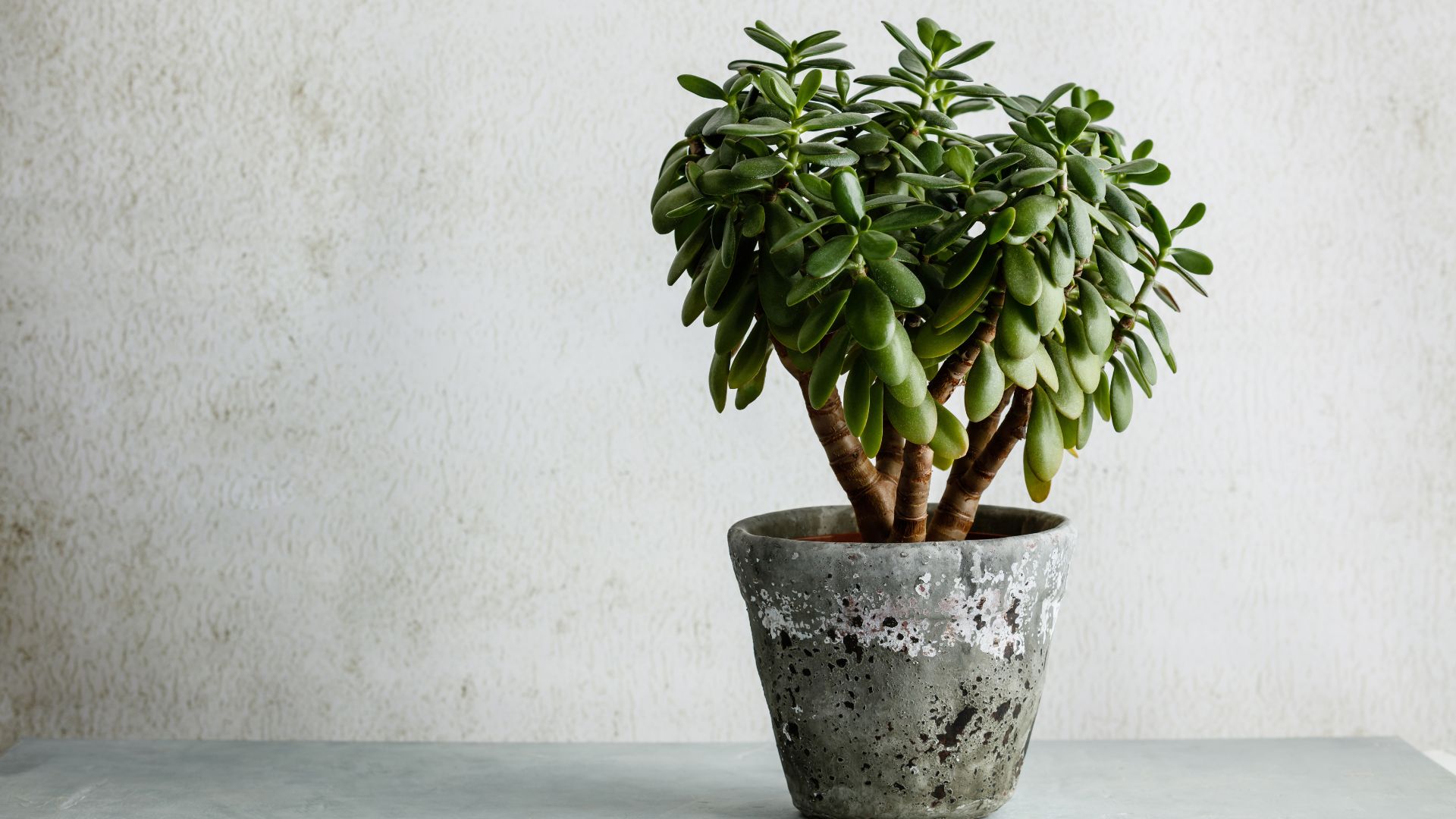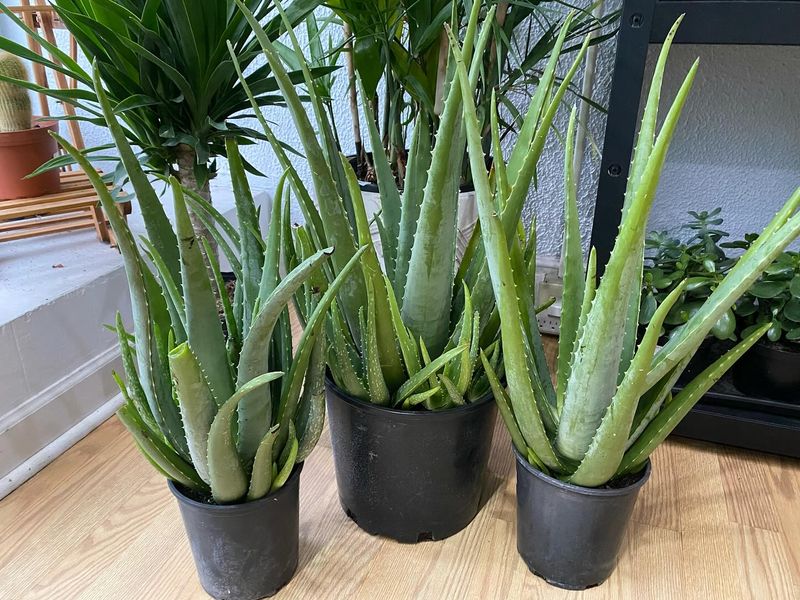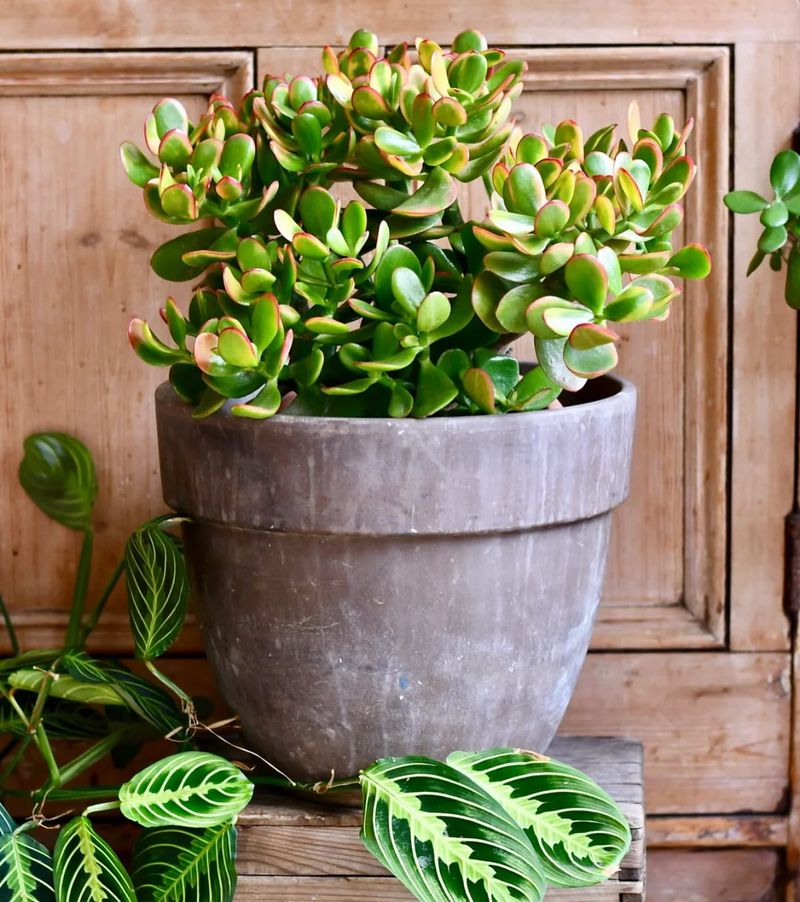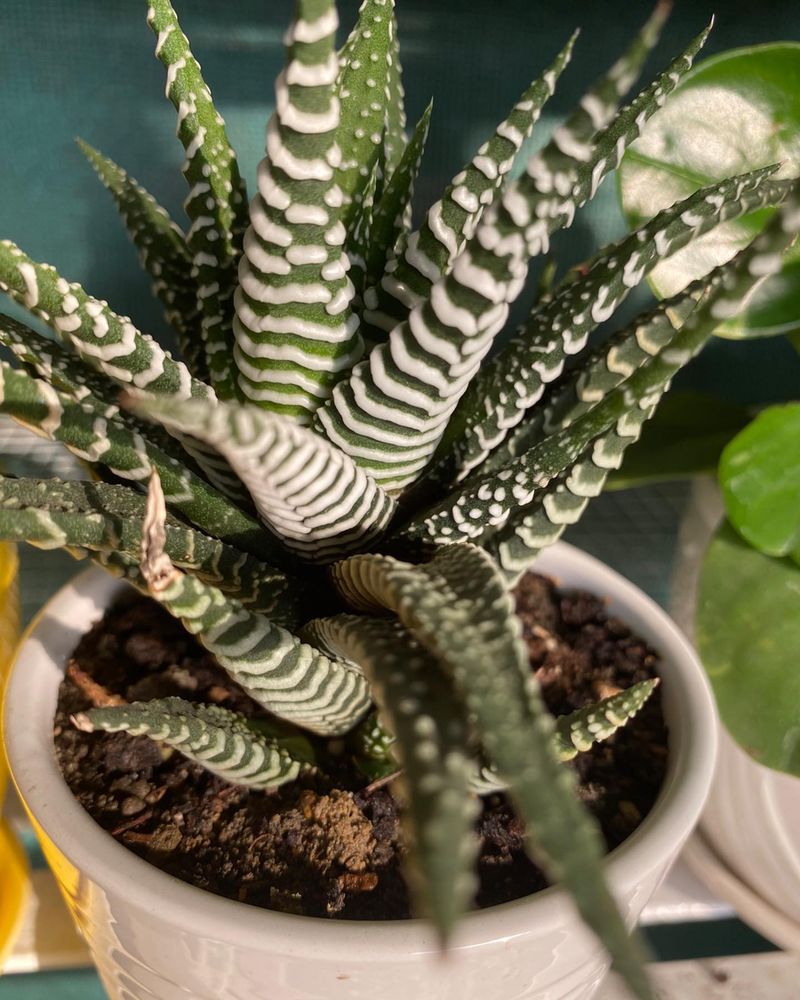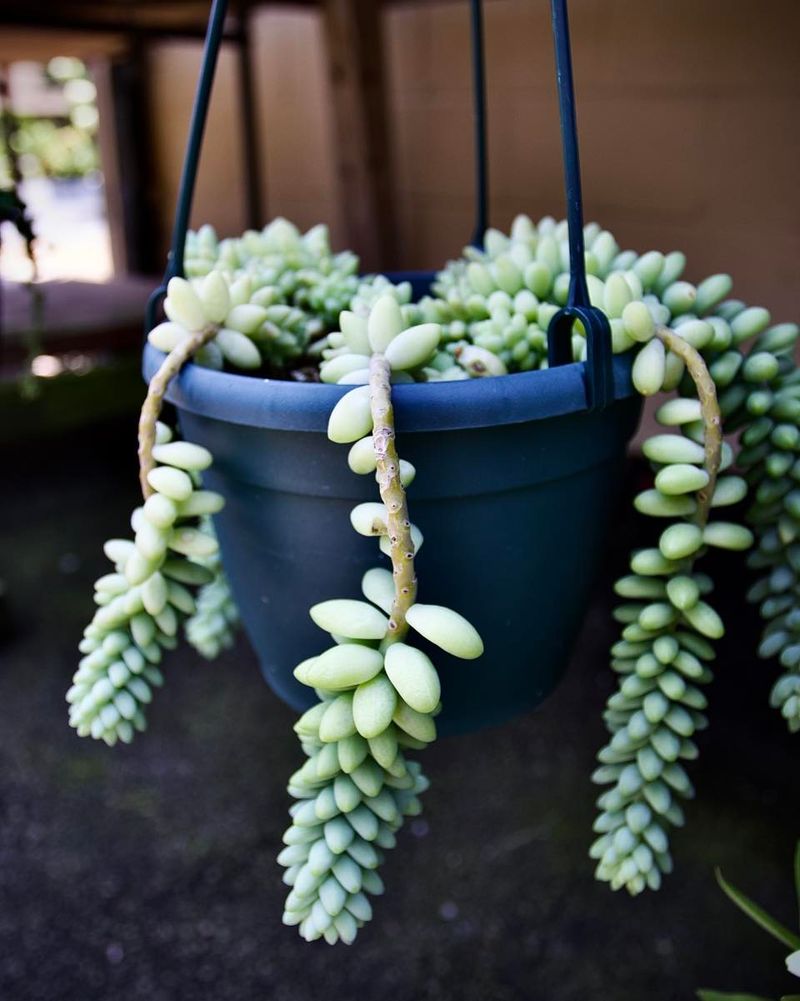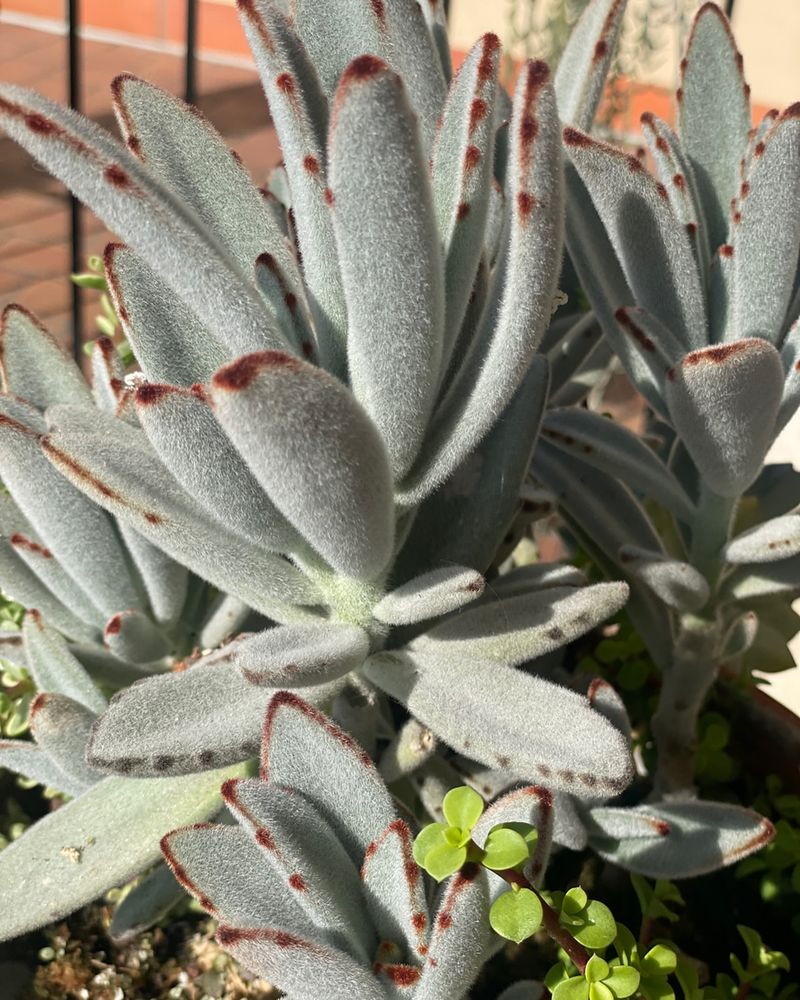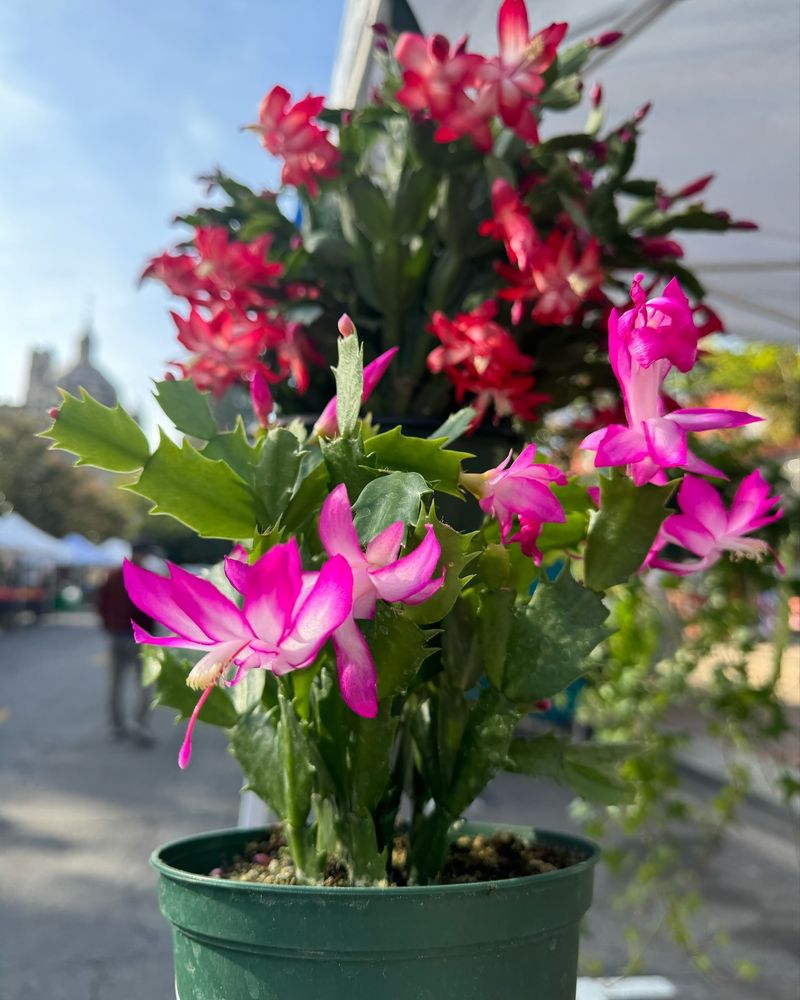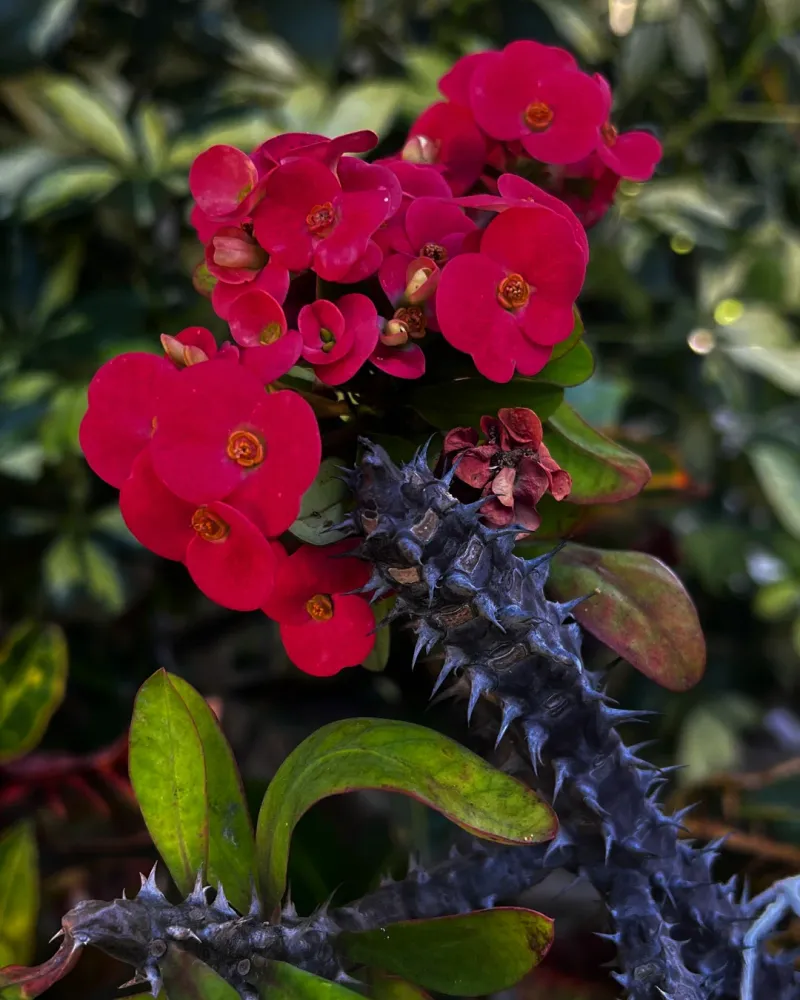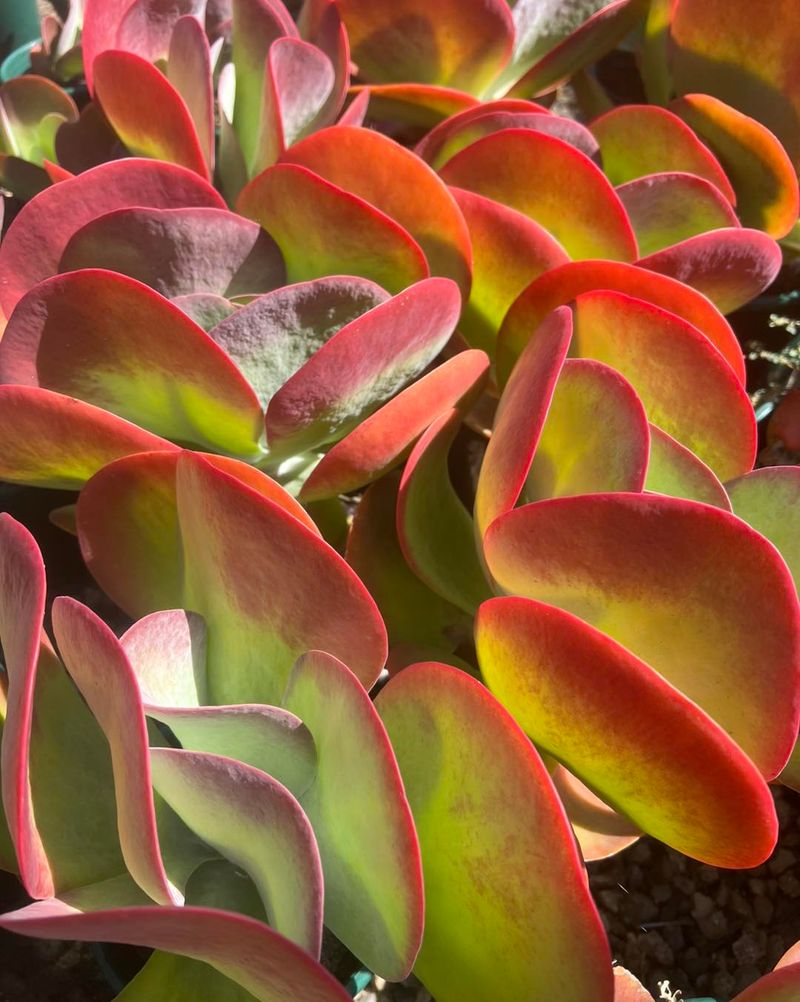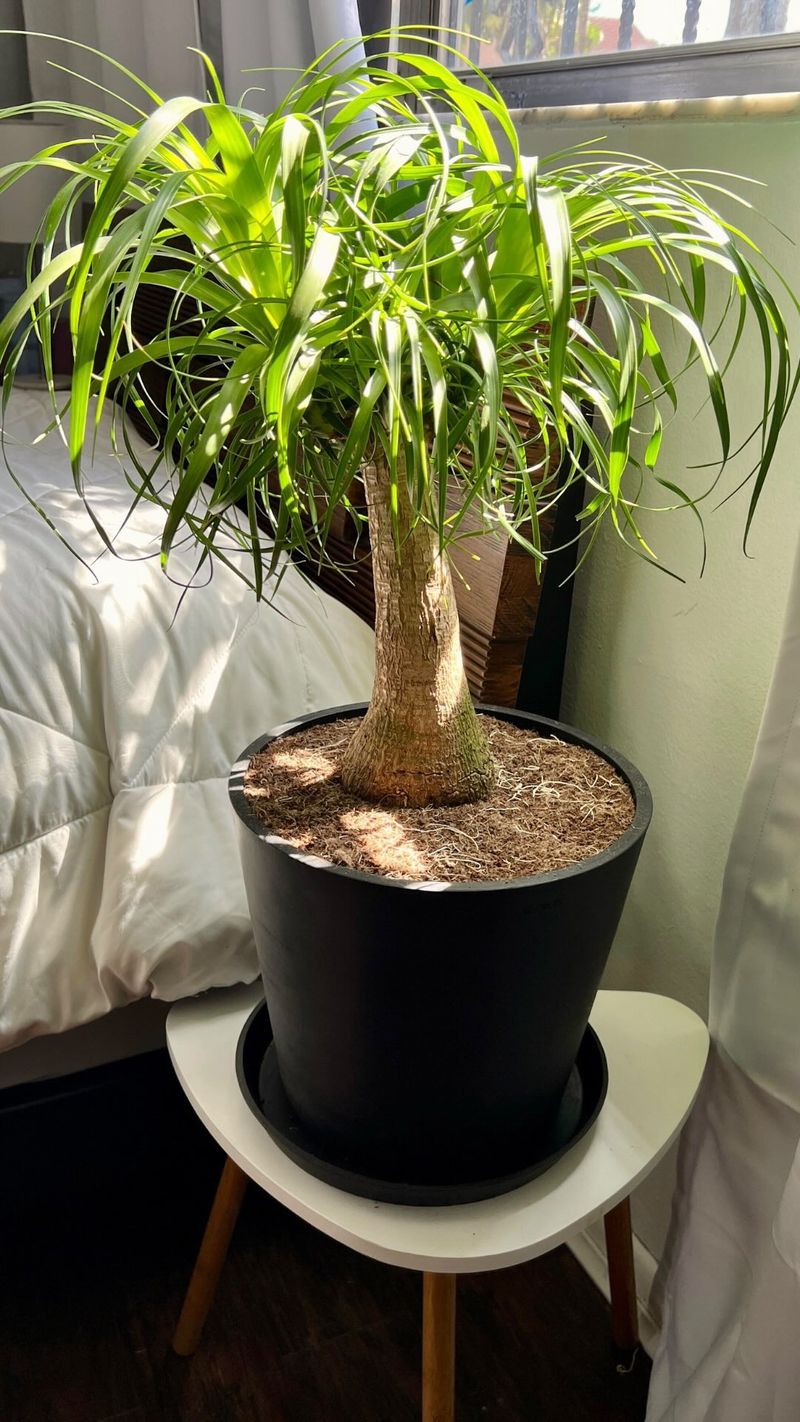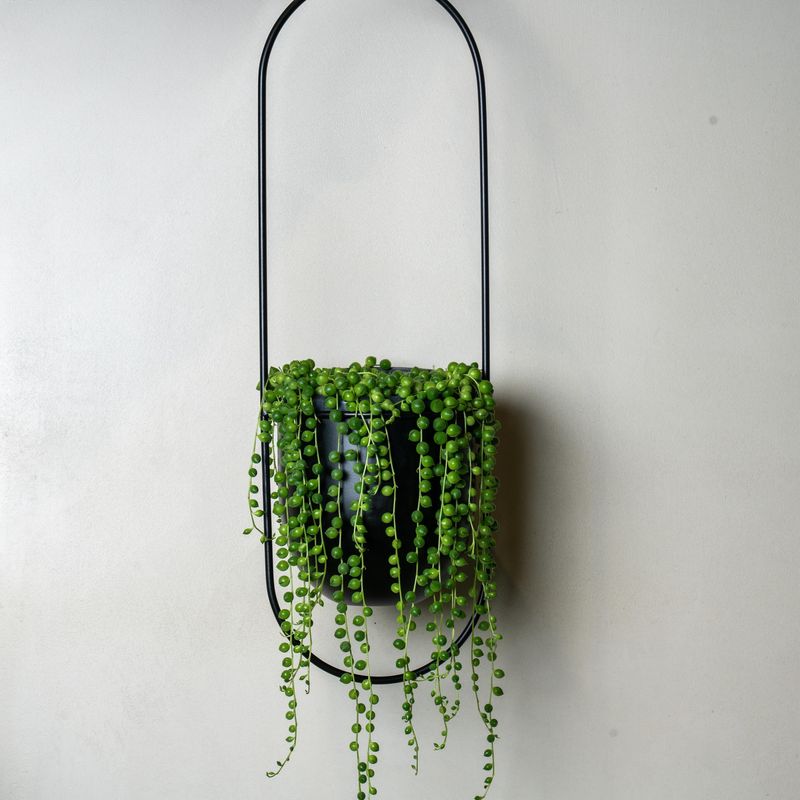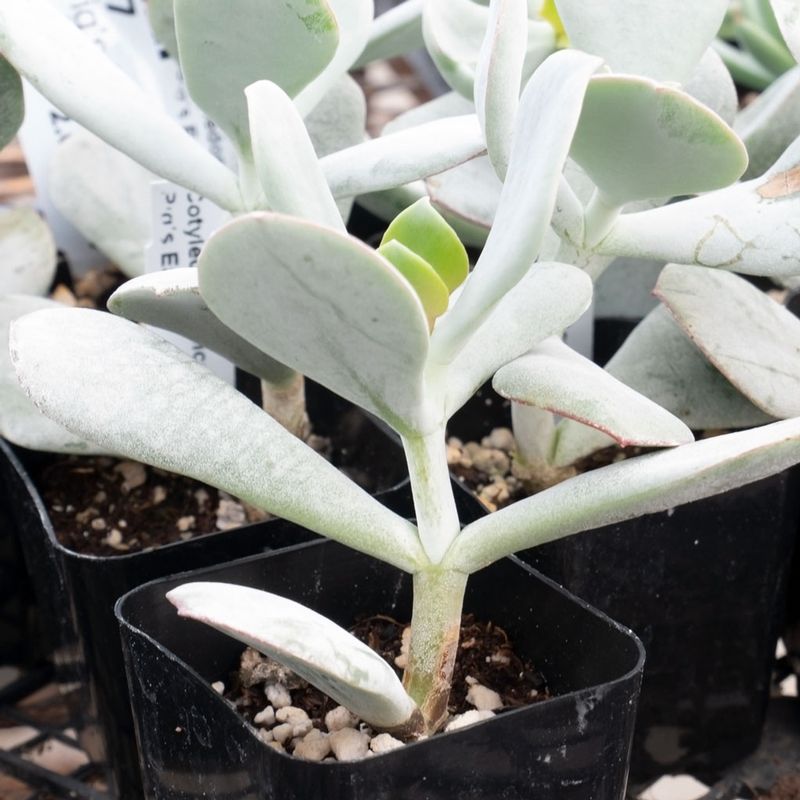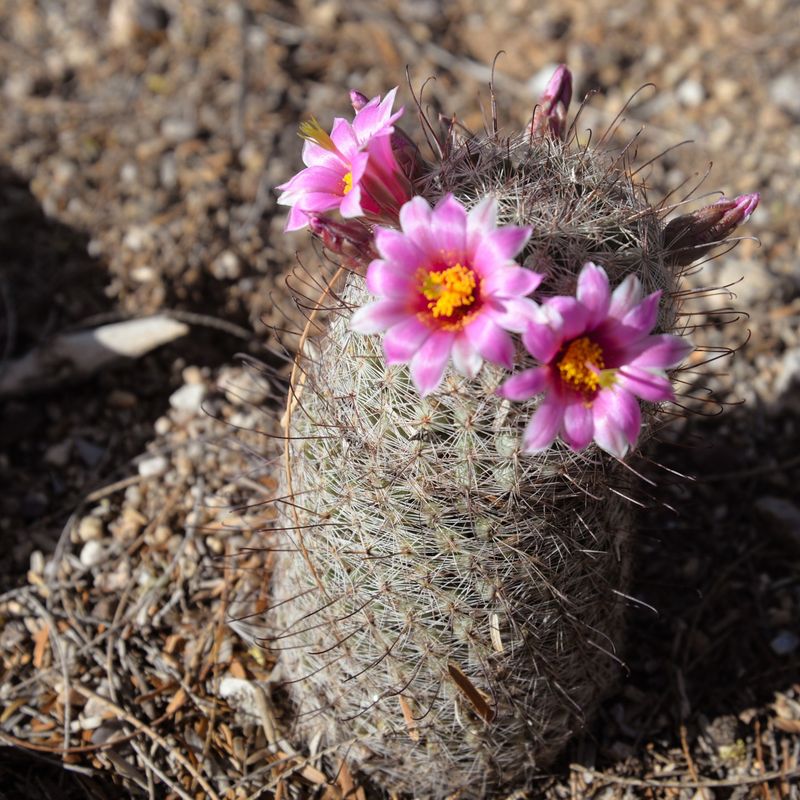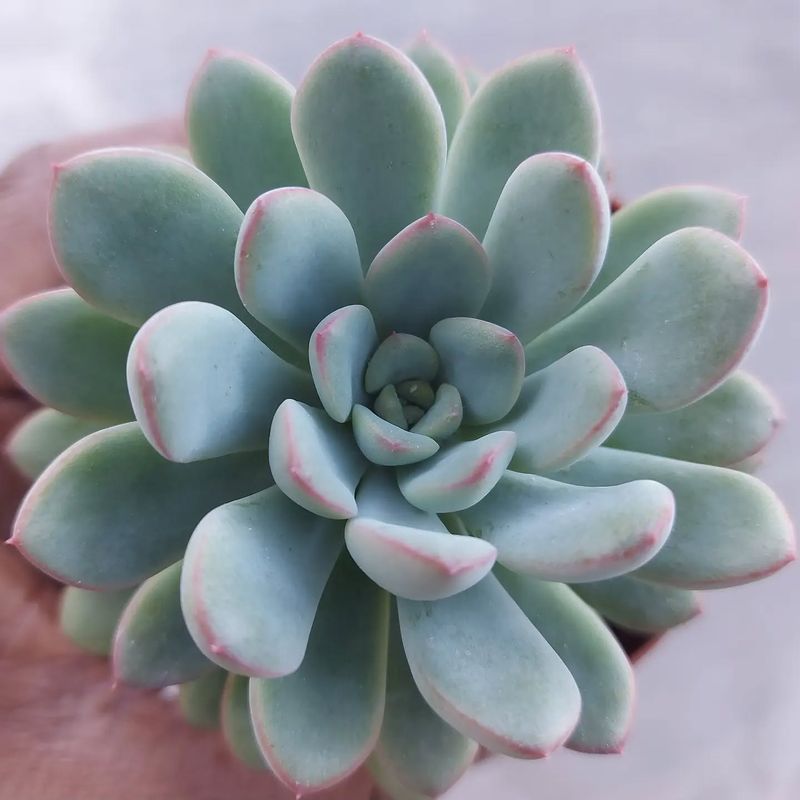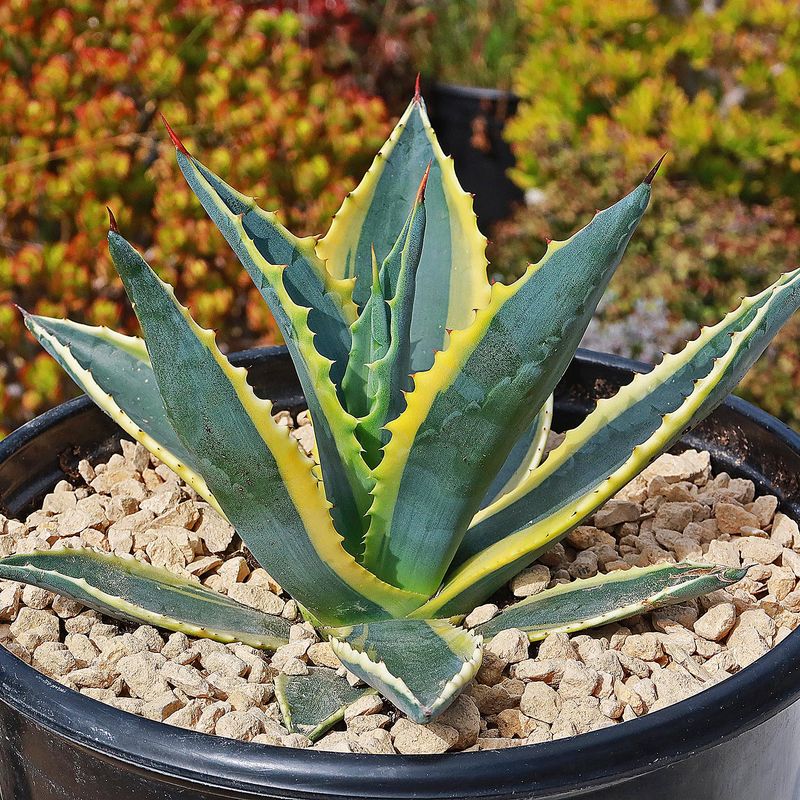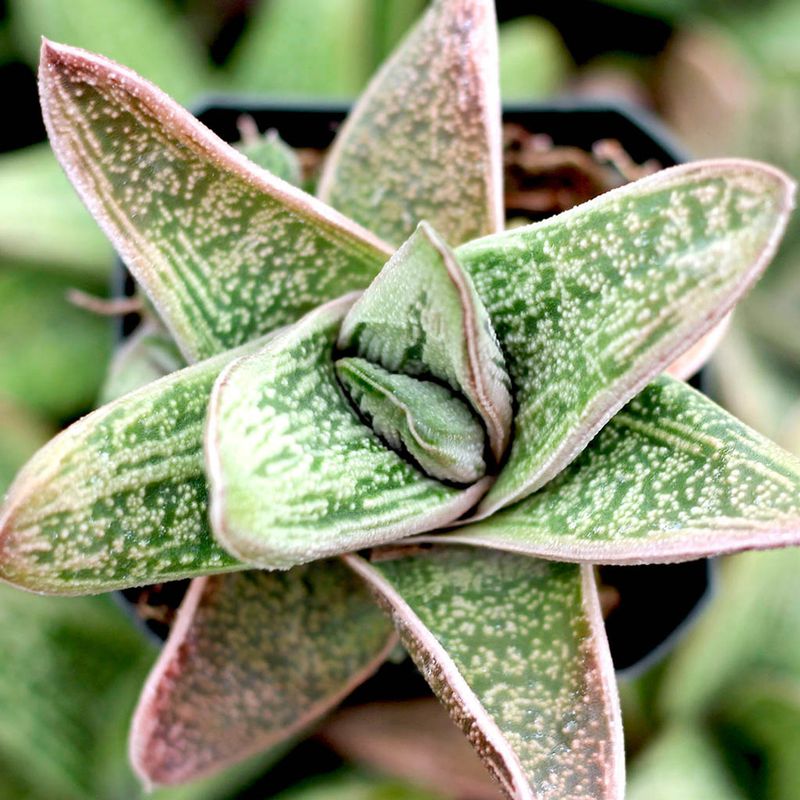Succulents have become the go-to plants for people who want greenery without the hassle. These water-storing wonders can brighten your home while forgiving your occasional neglect.
I’ve killed my fair share of houseplants, but succulents have taught me that gardening doesn’t have to be complicated. Even my jade plant survived three weeks without water when I forgot about it during a work crisis.
Whether you’re a busy professional, frequent traveler, or simply forgetful, these 17 hard-to-kill succulents will thrive despite less-than-perfect care. No green thumb required.
1. Aloe Vera
The kitchen windowsill champion isn’t just for sunburns. My aloe has survived everything from scorching summer heat to forgotten watering schedules. Its thick, gel-filled leaves store water for weeks.
Growing up, my grandmother kept the same aloe plant for 15 years, occasionally breaking off a leaf for minor burns and cuts. The plant never complained.
Aloe prefers bright light but adapts to less ideal conditions. Just avoid overwatering—I check the soil by sticking my finger an inch deep and only water when it’s completely dry.
2. Jade Plant
Often called the money plant, jade brings more reliability than wealth. These mini tree-like succulents develop thick, woody stems and plump oval leaves that seem to thrive on neglect.
Last year, I rescued a forgotten jade from my neighbor’s moving pile. Despite being root-bound and parched, it bounced back within weeks with minimal intervention.
Place yours in a bright spot, water only when the soil feels bone-dry, and watch it slowly transform into a miniature tree. Jade plants can live for decades, becoming family heirlooms passed down through generations.
3. Zebra Haworthia
Perfect for dark apartments, the zebra plant thrives where other succulents surrender. Its distinctive white stripes aren’t just decorative—they help reflect intense light in its native South African habitat.
My first apartment had terrible lighting, but my zebra haworthia didn’t mind one bit. While my other plants stretched awkwardly toward the window, this striped wonder maintained its compact rosette form.
Unlike sun-loving succulents, haworthias prefer bright indirect light. They’re slow growers that rarely need repotting and can handle irregular watering schedules without throwing a fit.
4. Burro’s Tail
Cascading stems covered in plump, blue-green leaves make the burro’s tail a standout in hanging baskets. Native to Mexico, this trailing succulent stores enough water to survive months of drought.
Handle with care—those chubby leaves fall off at the slightest touch. I learned this the hard way when moving mine to a new spot, leaving a trail of leaves behind. The good news? Each fallen leaf can potentially grow into a new plant.
Burro’s tail appreciates bright, indirect light and minimal watering. I’ve noticed mine grows faster in summer but slows dramatically in winter, requiring even less attention.
5. Snake Plant
Technically not a true succulent but sharing similar tough-as-nails qualities, snake plants have sword-like leaves that stand tall in the darkest corners. NASA studies found they filter indoor air pollutants, making them functional as well as decorative.
My office snake plant survived two years of fluorescent lighting and sporadic watering. When finally brought home, it rewarded me by sending up a surprise flower stalk—a rare treat from these typically flowerless plants.
Virtually indestructible, snake plants tolerate low light, drought, and neglect. Their only weakness is overwatering, so I let mine dry completely between waterings.
6. Panda Plant
Velvety gray-green leaves edged with chocolate-brown speckles give the panda plant its distinctive teddy bear appeal. The soft fuzz isn’t just cute—it’s a clever adaptation that reflects sunlight and conserves moisture.
During a month-long drought restriction last summer, my panda plant was the only one that didn’t show signs of stress. Its fuzzy leaves remained plump while other plants wilted dramatically.
Native to Madagascar, panda plants prefer bright indirect light but adapt to partial shade. Water sparingly—I’ve found they’re much happier being forgotten than fussed over with frequent watering.
7. Christmas Cactus
Unlike desert cacti, Christmas cacti hail from Brazilian rainforests, growing as epiphytes in tree crevices. Their segmented stems cascade beautifully, erupting with colorful blooms around December—if you treat them right.
My grandmother’s Christmas cactus is older than I am. She divides it occasionally, giving pieces to family members, creating a living family tree of plants. Her secret? Benign neglect most of the year.
These plants prefer more humidity than desert succulents. I keep mine in a bright bathroom where shower steam provides extra moisture. With minimal care, they’ll reward you with stunning winter flowers when everything else looks dormant.
8. Crown Of Thorns
Legend says this thorny succulent formed Christ’s crown—hence its biblical name. Behind those intimidating thorns lies one of the longest-blooming succulents around, producing tiny colorful flowers nearly year-round with minimal care.
My crown of thorns survived a three-month neglect period when I broke my leg. Despite receiving no water, it greeted me with cheerful red blooms upon my return home from rehabilitation.
Caution: the milky sap can irritate skin, so I always wear gloves when pruning. Place in bright light, water when the soil is completely dry, and this tough plant will bloom through drought, heat waves, and occasional forgetfulness.
9. Paddle Plant
Sometimes called flapjack plants, these striking succulents form rosettes of rounded, pancake-like leaves. When stressed by sun or drought, leaf edges blush with vibrant red margins—a feature many growers deliberately encourage.
I accidentally left my paddle plant in full summer sun during a heat wave. Instead of wilting, it responded by developing gorgeous crimson edges that made it even more eye-catching than before.
Native to South Africa, paddle plants need bright light to maintain their compact shape. Without sufficient sun, they stretch out awkwardly. Water thoroughly but infrequently, allowing the soil to dry completely between waterings.
10. Ponytail Palm
Despite its name, the ponytail palm isn’t a palm at all—it’s a succulent with a bulbous trunk that stores water like a camel’s hump. Long, thin leaves cascade from the top like a fountain of green hair.
During a two-week vacation, I forgot to arrange plant care. Everything else looked sad upon my return, but my ponytail palm hadn’t noticed my absence at all. Its water-storing trunk had provided all it needed.
These Mexican natives can live for decades in the same pot, growing extremely slowly. Mine has occupied the same corner for seven years, requiring minimal attention beyond occasional dusting of its graceful leaves.
11. String Of Pearls
Imagine pea-sized green marbles strung along slender stems, cascading over pot edges like living jewelry. That’s the magic of string of pearls, a South African succulent that makes a statement in hanging planters.
I’ve propagated dozens from my original plant, simply by laying broken strands across soil. Each “pearl” contains a translucent window that allows light to reach inner tissues—a clever adaptation for its native habitat where it grows partially buried.
Bright indirect light keeps the pearls tight and round. Direct sun can burn them, while too little light causes gaps between pearls. Water only when the soil is completely dry and the pearls start to look slightly wrinkled.
12. Pig’s Ear
Named for its thick, oval leaves that resemble porcine ears, this South African native brings architectural interest to any collection. The powdery coating on its leaves isn’t dust—it’s a natural sunscreen called farina that protects against intense sunlight.
After dropping and breaking my pig’s ear pot last year, I simply stuck the broken pieces in soil. Within weeks, they rooted and continued growing as if nothing had happened. That’s resilience!
Give pig’s ear plenty of sun to maintain its compact growth and enhance its blue-gray coloration. Too little light causes stretching and faded colors. Its thick leaves hold enough water to survive weeks between waterings.
13. Hens And Chicks
Hardy enough to survive freezing temperatures, hens and chicks create living mosaics of rosettes in varying sizes. The “hen” (mother plant) produces smaller “chicks” (offsets) that cluster around her base, creating an ever-expanding colony.
My grandmother kept these in unglazed clay pots along her sunny porch steps. She never watered them—they survived entirely on rainfall and morning dew. Twenty years later, descendants of those same plants grow in my garden.
Perfect for outdoor rock gardens in zones 3-8, they also thrive indoors near sunny windows. Their only demand is excellent drainage. I mix extra perlite into their soil to prevent root rot during rainy spells.
14. Pincushion Cactus
Small but mighty, pincushion cacti pack plenty of character into compact forms. Their symmetrical shapes and harmless-looking spines (don’t be fooled—they can still prick!) make them perfect desk companions that won’t outgrow their space.
During a particularly harsh winter power outage, my apartment dropped to 45°F for three days. My tropical plants suffered, but the pincushion cactus didn’t even notice—its desert heritage prepared it for temperature swings.
These slow-growing cacti flower readily when mature, producing rings of tiny blooms that encircle their tops like halos. Bright light and minimal water keep them happiest. I water mine just once monthly during winter dormancy.
15. Echeveria
Rose-shaped rosettes in colors ranging from silvery blue to deep purple make echeverias the supermodels of the succulent world. Their geometric perfection has made them social media darlings and wedding décor favorites.
I’ve found echeverias to be surprisingly tough despite their delicate appearance. After a neighborhood cat knocked mine off the porch, I simply brushed off the dirt and replanted it. Within days, it looked perfectly settled in its new pot.
Bright light maintains their compact form and enhances coloration. Without sufficient sun, they stretch out seeking light, losing their characteristic rosette shape. Allow soil to dry completely between thorough waterings.
16. Agave
While too large for most indoor spaces when mature, dwarf agave varieties bring architectural drama to sunny spots. Their rigid, spear-like leaves command attention and respect—those terminal spines mean business!
During a summer-long drought when outdoor watering was restricted, my potted agave didn’t just survive—it thrived. Its desert heritage makes it perfectly adapted to extended dry periods.
Agaves store massive water reserves in their thick leaves. Most varieties need several years (sometimes decades) to flower, after which the main plant dies, but not before producing numerous offsets. Plant in extremely well-draining soil and forget about it—literally.
17. Gasteria
Often overshadowed by their aloe cousins, gasterias bring unique charm with their thick, tongue-shaped leaves arranged in asymmetrical patterns. Their name comes from the Latin word for stomach, referencing their bulging, stomach-shaped flowers.
My gasteria survived three apartments with vastly different light conditions—from a north-facing bathroom window to a south-facing balcony. It never complained, just adjusted its growth rate accordingly.
These South African natives make perfect beginner plants. They tolerate lower light than most succulents and recover quickly from occasional overwatering. Their spotted, textured leaves add visual interest even when the plant isn’t actively growing.

